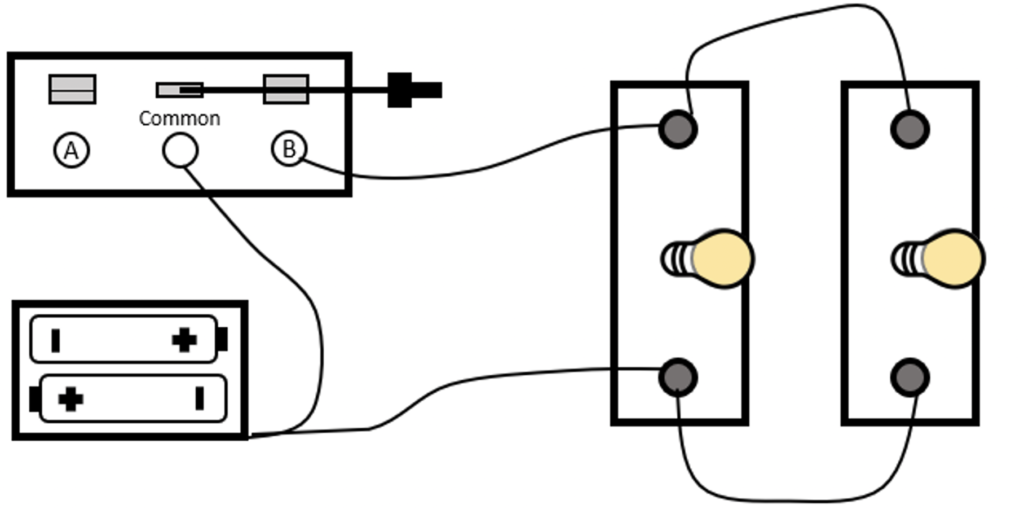Circuit 4: Parallel Bulbs
This circuit illustrates what happens when you put additional resistance into the load component in parallel.
For this circuit, you will need the battery, one switch, and two sockets and lightbulbs. These are the same components you just used, but the wiring is different.

Follow the video below to build this circuit on your own workbench.
video
Understanding This Circuit
- Using your hand, with the switch closed so the lights are on, trace the path the electricity takes. Start at the battery and follow the path until you get back to the battery on the second lead. Do this for each lightbulb.
- Using the multimeter, with the battery leads disconnected so there is no power to your circuit:
- Determine the resistance of each bulb by itself. Is it the same resistance you measured for one bulb in the series circuit? Record this reading.
- Determine the resistance of both bulbs together, when resistance is measured across them both (in parallel). To do this, touch your multimeter probes to the terminals on the same socket; it doesn’t matter which one, as long as the battery is disconnected. Write down what you find.
- How does the resistance of both bulbs compare to the resistance of only one bulb?
- With parallel circuits, is it possible for one of the lightbulbs to light if the other one is burned out? Test your hypothesis by removing one of the bulbs from its socket.
- Which wiring approach would be better for a string of Christmas lights—series or parallel? Why?
Feel like you've got this circuit mastered? Move to the next page and let's build another one.
